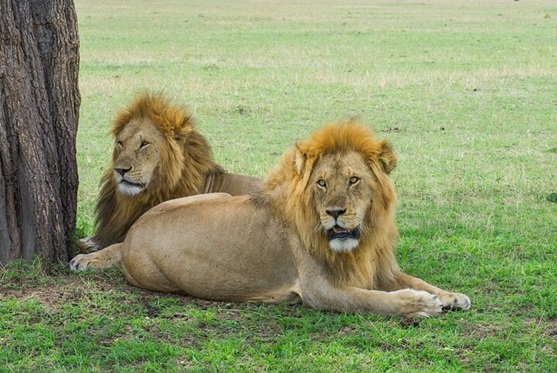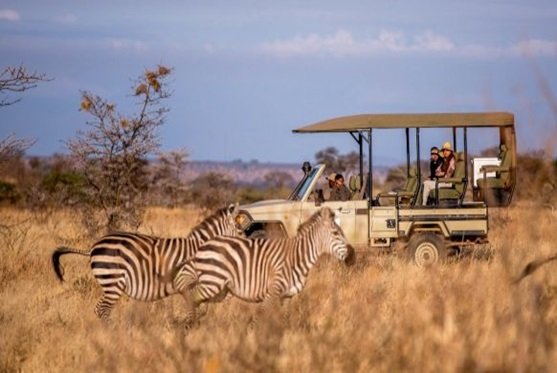
The Selous Game Reserve, now renamed as Nyerere National Park (in-part), is a protected nature reserve and wilderness area in southern Tanzania, East Africa. It covers a total area of 50,000 km2 (19,000 sq mi), with additional buffer zones, as well. It was designated a UNESCO World Heritage Site in 1982, owing to its high levels of biodiversity and vast, undisturbed natural landscapes, such as the grasslands and the miombo woodlands habitat.
Among the numerous species within the park are some of the continent's largest and most iconic (and most vulnerable, threatened or endangered), such as the bush elephant, black rhinoceros, hippopotamus, lion, leopard, spotted hyena, painted dog, Cape buffalo, Masai giraffe, plains zebra, white-bearded gnu and the giant Nile crocodile. Due to the fragility and sensitivity of the many species and ecosystems within the park, human habitation is not permitted within its bounds, and all persons entering and exiting are tallied and tracked by the Wildlife Division of the Tanzanian Ministry of Natural Resources and Tourism.


Most of the reserve remains set aside for game hunting solely through a number of privately-leased hunting outfitters, but a section of the northern park along the Rufiji River has been designated a strict photographic wildlife zone and is a more popular tourist area. There are several high-end lodges and camps for visitors situated along the river and lake systems; somewhat difficult to access by road, most visitors arrive by small aircraft from Dar es Salaam, though train and car arrival is also possible. Walking safaris are offered in the Selous (something not every park allows), and boat trips on the Rufiji are another popular activity.